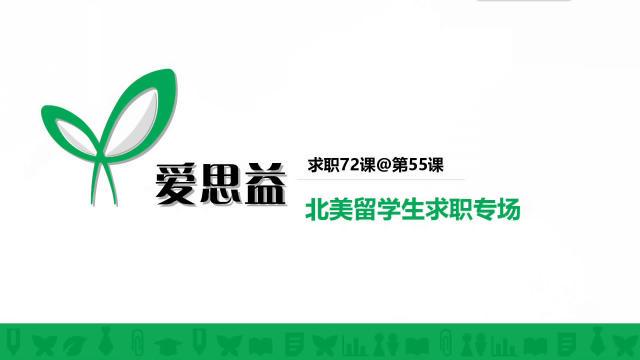presentation怎么吸引人:五招讓別人聽你說話
作者:滬江英語編譯
來源:SavvySugar
2012-12-03 18:24
Have you ever stood before an audience, uncertain whether you are truly connecting with them? Or, have you spoken to a colleague who appears to be getting the message--but whose actions later tell another story? Here are five strategies that can help you stop reciting facts--and start making a true connection.
你有沒有過這種體驗(yàn):站在人前說話,卻不知道聽眾是不是真的有在聽你說?或者你的同事似乎聽懂了你的話,但真正去執(zhí)行的時(shí)候卻背道而馳?以下五招教你如何讓別人真正聽懂你的話,而不是光在那里擺事實(shí)而已。
1. Keep your mouth shut--for a couple of moments.
1.開口前先等一等
Don't say anything substantive until you have an audience connection. Note that their first impression is visual, not verbal. The body speaks before the mouth is open. Avoid rocking, looking down, and fidgeting. Stand and walk with confidence.
在你的聽眾注意力集中之前,先不要說任何實(shí)質(zhì)性的內(nèi)容。聽話人的第一印象往往來源于他們所看見的,而不是你說了什么。在開口講話之前,先要注意你的身體語言。不要晃來晃去、不要低頭看下面、不要坐立不安。要自信滿滿地站立或走動(dòng)。
2. Get your audience engaged.
2.讓觀眾參與進(jìn)來
Get the eyeballs looking up before you say anything. Move with quiet confidence and smile, inviting people to look up and pay attention. Invite your audience to engage on the emotional level by offering a warm greeting. You might even ask them a question that prompts a response. It can be simple, as in: "How is everybody doing today?"
在觀眾抬頭看你之前,不要說話。你可以面帶微笑、充滿自信地走一走,請(qǐng)大家抬起頭來,并且集中精神。你可以通過和觀眾熱情地打招呼來吸引他們的參與。你甚至可以用一個(gè)提問來得到觀眾的回應(yīng),比如問一問“今天大家都過得怎么樣?”
3. Grab their attention to make it memorable.
3.吸引注意,讓人難忘
People remember the very first substantive that you say. Once you have their attention, jump right in to the most important thing you have to say. This powerful beginning will stick with your audience, creating the impact you're looking for.
你說的第一句話是觀眾記得最牢的。一旦你成功吸引了觀眾的注意力,馬上就把你要說的最重要的內(nèi)容說出來。這一強(qiáng)有力的開篇會(huì)持續(xù)吸引觀眾,達(dá)到你預(yù)期的效果。
4. Use verbal cues.
4.語言引導(dǎo)很重要
Use attention-provoking signals when you move from one part of the speech to the next. For instance, you might verbally number your key points or use other verbal signals like "Let's move on" or "My next topic is..."? Always give the audience verbal cues to look up at you.
當(dāng)你的演講要從一個(gè)主題切換到另一個(gè)主題時(shí),記得使用一些可以引起聽眾注意的信號(hào)詞。比如用數(shù)字來標(biāo)明各個(gè)要點(diǎn),也可以用簡(jiǎn)單的句子來引導(dǎo),像是“讓我們繼續(xù)來看”或者“我的下一個(gè)主題是......”一定要給聽眾這些語言上的引導(dǎo),讓他們可以一直跟上你的腳步。
5. Recap what matters.
5.復(fù)述要點(diǎn)
Take all of the substantive points from your talk and group them all together at the very end of the presentation. Remember your provoking signal and say something like, "In summary," then recap everything from your presentation that matters the most.
在你演示的最后,記得要把演講中所有重要的內(nèi)容總結(jié)歸納,然后復(fù)述一遍。記住用引人注意的信號(hào)詞,比如“總結(jié)一下”來復(fù)述整場(chǎng)演示中的關(guān)鍵內(nèi)容。
"In summary," your audience must be able to feel and experience your communications, or you simply won't have the impact that you set out to achieve.
“總結(jié)一下”,你必須讓你的觀眾能夠理解并感知你講話的內(nèi)容,不然你很難達(dá)到演示所期望的效果的。
相關(guān)閱讀:
年終總結(jié)也可以提要求:五個(gè)小要求讓你來年收獲大回報(bào)
- 相關(guān)熱點(diǎn):
- 演講視頻
- 職場(chǎng)商務(wù)
- 及物動(dòng)詞











